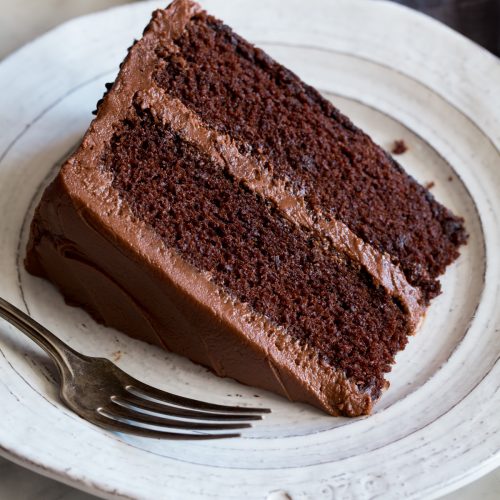Pizza baked Italian-style: 15 secrets
Following simple tips and tricks, we can quickly prepare more delicious homemade pizza, which is closer to the main recipe of Italian pizza. Our simple pizza will become a professional pizza if we follow these tips. Creating homemade pizza is time-consuming and complex, but with practice, you will gradually improve, and you will cook a better pizza each time. We have divided the critical points of preparing homemade pizza into several pizza doughs, sauces, cheeses, and elements on pizza. Last but not least, we have provided some tips for baking pizza.

1. Refrigerate the dough for gentle fermentation
Italian pizza dough ferments in the refrigerator for 48 hours before baking. The elasticity of gluten is maximized without making the dough rubbery or hard. Refrigerating dough for a long time will make it taste good regardless of whether you make it yourself or buy it ready-made.
The fermentation process is slowed down and the dough’s taste and texture are improved by reducing its temperature. As a result, more starch is broken down by the yeast, and the dough becomes softer and lighter in texture. By-products from this process enhance the taste of the dough.
Let the dough rest for an hour at room temperature before transferring it to the refrigerator to continue the fermentation process. Before baking the pizza, separate the 220 g pieces of dough and roll them on the table. After that, cover them and let them rest for at least an hour. The dough should rest for two hours if the air in your kitchen is cold. Before baking the pizza, the dough should reach room temperature.
The dough should rest in the refrigerator for at least 24 hours. Even if you can only refrigerate it overnight, it’s still better than nothing.
2. Cold dough should not be spread
The cold will cause gluten to accumulate and the dough to harden if you take it out of the fridge directly. Every time you apply cold dough, it returns to its previous state. In the oven, the stiff dough also rises and thickens.
3. Hand-spread the dough
When you roll the dough with a rolling pin, the air inside escapes and the dough is squeezed, causing the pizza bread to thicken. Spreading the dough by hand allows us to control it. The texture and taste of poorly shaped dough will still be good. You can find many videos on the internet showing you how to spread pizza dough by hand.
4. The dough should not be overkneaded
When the dough is thin and lightly passed through, it is ready. In the case of pizza dough, this means that you have kneaded it a lot. Because the gluten in this dough is very strong, it is difficult to spread, and the pizza bread becomes hard and bread-like.
5. Make sure you use the right flour
The right flour plays an important role in the texture of the pizza. Homemade pizza can be made with bread flour.
Protein content in flour should be between 12 and 15%. Because gluten decomposes over time, dough made with this flour can be stored in the refrigerator for hours.
Pizza bread thickens like a cake or biscuit when made with cake flour or all-purpose flour.
6. Less yeast should be used
There is no need to use as much yeast as stated in the recipe. It is possible to prevent the strong taste of yeast by reducing the amount of yeast. This is a problem that most beginners face.
Most recipes eliminate the long fermentation process, so the pizza is ready in a few hours. You do not need this amount of dough if you ferment your dough in the refrigerator for a longer time (24 to 48 hours), however. As the yeast feeds on the sugar and breaks down the starch, it creates a bubble and a carbon dioxide taste.
7. Making homemade pizza requires precise measurements. It is possible to make mistakes when preparing the dough, which can result in the dough not baking or swelling well, or the pizza bread tasting like yeast or bread. Additionally, measuring cups and spoons make it difficult to use constant amounts of ingredients. A 0.1-gram digital scale for yeast, salt, and sugar is a great investment.
1. Sauce for pizza
Mash and puree the tomatoes to prepare the sauce. After that, season them with salt and pepper. You should not cook the sauce because it cooks the oven and tomatoes. If we cook the sauce while cooking the pizza at high heat, we lose the bait. A pungent burning taste will result from adding oil to the sauce.
2. You may need to use less sauce than you think
For a pizza with a diameter of 30 cm, a small spoon of sauce is sufficient. It would be helpful if you did not use too much sauce. It is enough to apply a thin layer. In a way, pizza sauce acts like glue between the dough and the ingredients.
Additionally, the pizza sauce should not be juicy since the oven does not have enough time to dry the ingredients. Also, the juiciness of the sauce prevents the pizza bread from becoming crispy and dry.
Cheese made from fresh mozzarella
We usually top our pizzas with a thick layer of grated or sliced mozzarella cheese. However, fresh mozzarella is used in Italian pizza. It is cut thin and long, placed on the pizza ingredients, and does not completely cover them.
Thus, the cheese is melted and spread without affecting the taste of other ingredients and is only combined with dough and sauce. As opposed than old mozzarella, fresh mozzarella does not melt or return oil. Aged mozzarella should be bought whole and sliced, not grated or sliced.
Pizza ingredients should not be overdone.
A pizza with fewer ingredients is better. Too many elements on the dough make it difficult to transfer the pizza to the oven, soak it, and knead it. When eating pizza, spraying ingredients rather than spilling them allows you to taste the flavors one by one.
You should not add oil to the ingredients on the pizza, as it will cause a burning sensation. To give the pizza a little fresh taste, you can immediately sprinkle some oil on it after it comes out of the oven.
Pizza can be made with raw materials.
Pizza will be improved by adding some ingredients after it has been removed from the oven. In the range, fresh vegetables wither and burn. The pizza taste will be much better if you add them after cooking. Raw mushrooms taste good after cooking, but grating the small and delicate mushrooms on a prepared pizza is better. Heat from the pizza softens and cooks the grated mushrooms, releasing their flavor. To make a simple pizza great, add spicy vegetables, fresh peppers such as shank, olive oil, and lemon juice.
You can add grated Parmesan cheese, oil mixed with garlic, or dried oregano after cooking the pizza.
The pizza stone should be used
Pizza cannot be baked in home ovens because they are not hot enough. Here’s where the pizza stone comes in. Pizza is baked on this stone because it creates a hot surface. Additionally, it removes moisture and makes the pizza crispy. If you cook the pizza on a cold, thin tray shell, it will be doughy and not fully cooked.
The oven should be preheated
Pizza is better cooked in a hot oven. The pizza stone reaches its highest temperature when the oven is preheated. Make sure the oven is preheated for at least 30 minutes. For best results, preheat the oven for at least an hour.
Preheating the oven reduces the spring puffs of the stove. Baking breath occurs when the dough puffs up in a hot oven before it hardens. As a result of preheating the oven, the pizza bread dough becomes soft instead of crispy and toasted.
Pizza should not be taken out too soon.
By removing the pizza from the oven quickly, the middle of the dough becomes doughy and the pizza bread does not become crispy. Bring out the pizza slowly. The pizza can stay in the oven as long as the bread or ingredients do not burn. Since the bread becomes crispier and browner as it bakes, the longer the baking time, the better it tastes.










